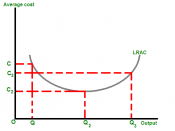CASE:
The California-Illini Manufacturing Company's (CI) plant operates in the rural central valley of California. It is family-owned and run. CI's plant manager, a grandson of the founder, went to school with many of the employees. Despite this family atmosphere, CI is the largest producer of plain and hard-faced replacement tillage tools in the United States. It averages annual sales of $13 million. Farmers use tillage tools to cultivate the land. Hard-facing, the application of brazed chromium carbide to leading edges, increases a tool's durability.
The Production Process
Historically, CI grew from the founders' original blacksmith shop, and today the production process is still relatively simple. The plant manager describes the process as "You simply take a piece of metal. And then you bang, heat, and shape it until it's a finished product. It really isn't a sophisticated process. We just do it better than anyone else."
The production process is like a flow following a routing from one cost center to another in a sequence of move, wait, set-up, and run time for each process. Work-in-process inventories in the move and wait stages litter the plant. Economic lot size rules determine the size of each batch while production schedules push jobs onto the floor.
The Cost System: Measuring Performance
CI uses standard unit costs to measure performance and profit potential. In this cost system, each materials and labor input is given a standard usage, and production managers are evaluated on their ability to meet or improve upon these standards. Differences from the standard are called "variances." For example, if a certain manufacturing operation required a standard 5 minutes, the operator would be expected to complete a lot of 100 parts in 500 minutes. If 550 minutes were required, there would be a 50-minute unfavorable variance.


